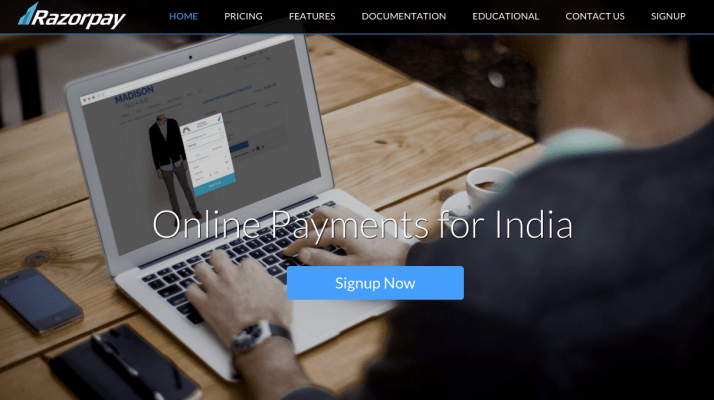The rise of companies like Flipkart, Snapdeal and Ola have put a spotlight on the e-commerce opportunity in India, where the growth of catchy businesses is being fuelled by consumer demand, improving Internet connectivity and generous VC funding. Now, a new startup called Razorpay — part of the current Y Combinator class — is hoping to ride that trend, by giving more startups and larger tech companies in the country the ability to make it easier to integrate payments into their services.
Razorpay is not unlike Stripe — a YC alum itself — in that it provides a very simple interface and gateway for businesses that want to take payments for goods or services online. Using Razorpay’s APIs, a company can add payments with a few lines of code, and consumers can then pay using a credit card, a debit card or net-banking (online bank transfers, one popular payment option in India). What makes Razorpay special, however, is that it’s made by an Indian team and specifically for businesses that operate in India.
This is not a small undertaking. Right now, for a business to take online payments in the country, it needs to go through a lot of paperwork, bureaucratic red tape, and wait time, often in a process that needs to be done region-by-region. It’s a big enough hurdle that it has kept the number of companies currently offering payment gateways in India to a minimum, and barred many payment companies from outside of India from coming in to disrupt things. (Stripe, for example, is not there, and while PayPal is operational in India, it’s faced its own challenges.)
And that, in turn, has had a knock-on effect for startups in the country.
The difficulty of adding a payment layer to a service online was encountered first-hand by cofounders Shashank Kumar and Harshil Mathur. Looking at other ideas for a startup business, the pair needed a payment gateway, and that’s when they realised “how much stuff you need to get one,” said Kumar, before even starting to embark on integrating what were not simple solutions. “We thought, we can do something about this, not just for ourselves but for others,” said Mathur.
And so Razorpay was born.
While Stripe had competition in the form of PayPal, Google and others when it first hit the market, this actually meant that there was already a wide audience of businesses out there prepared to switch to Stripe because “It doesn’t suck.” The challenge for Razorpay is a bit different: there are incumbents in the market — namely companies like CCAvenue, BillDesk and PayU — but the wider market is still relatively immature.
“Really, the payments ecosystem in India is still in the pre-PayPal space,” said Kumar. “What we are doing is more like jumpstarting rather than disrupting.”
Part of the issue is that card penetration is still nowhere near saturation — and you still have as a standard offering cash on delivery for online sales. And it also goes right down to how payment services are charged, with many services taking commissions “in the double digits,” he noted. In contrast, Razorpay currently has two options, one at 2% and the other at 2.5% per successful transaction, with different features and fees associated with each.
So far, with little beyond word of mouth, Razorpay has seen some healthy activity. Early customers include Shifter, a Truck delivery service, nanotechnology marketplace NanoWE and travel and hospitality startup Zostel. Mathur told me that in the past three weeks its merchants have grown 100% weekly, and transaction volume has grown at 300% weekly.
Razorpay’s main product was built by the pair when they were still in India, then streamlined and taken live in California. Being a part of YC has given the pair “a different view of the world, and more exposure,” said Kumar — who worked for Microsoft for two years before Razorpay, said. “But we plan to go back to India after the program ends and set up in Bangalore,” Mathur added.
That will put them in place to reap the benefits of India’s rapidly growing market. The country’s online payments volume is currently doubling every two years and is on track to be the third largest market for payments after the U.S. and China, Y Combinator partner Kat Manalac noted.
